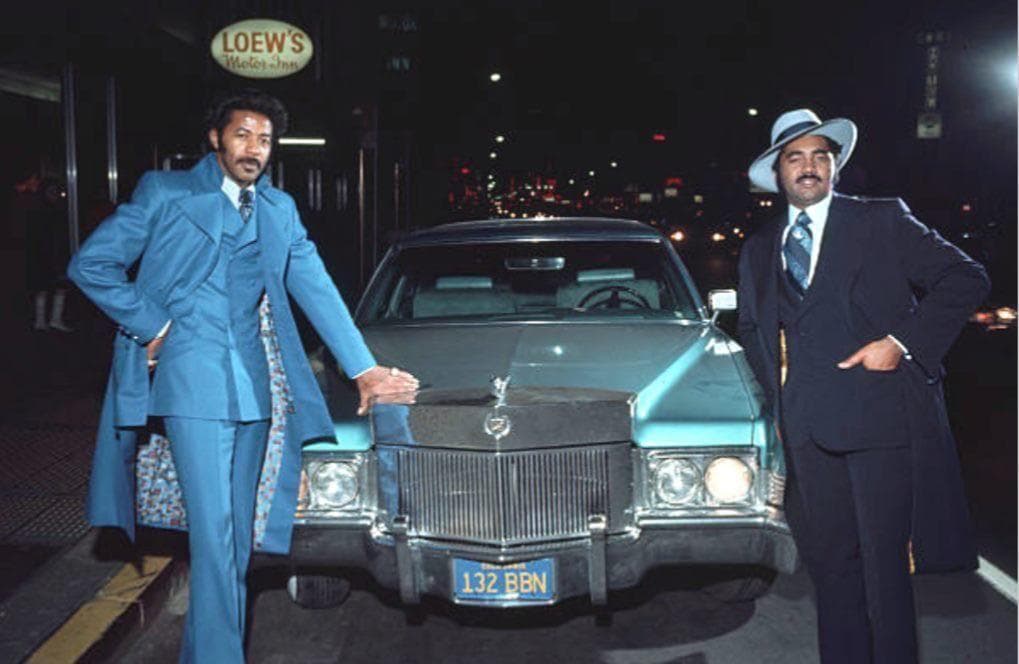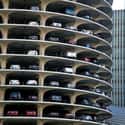-
(#1) It's All About Efficiency And User Experience
There are plenty of things to consider when designing a parking lot, but much of the decision-making boils down to three aspects. First is the total number of spaces - usually, you'll want to maximize the space to maximize potential visitors or customers. Second is the width and direction of traffic lanes, which help determine how efficiently a parking lot operates.
Finally, the ease of entry and exit, both in relation to parking spots and the lot itself, makes a real difference in how "user-friendly" a parking lot is.
-
(#2) 90 Degree Parking Maximizes Spots
The standard option for a parking lot is the perpendicular, 90 degree model. This means that a driver has to turn their vehicle a full 90 degrees from the traffic lane in order to enter their parking space. This model has the benefit of pure space efficiency, as it’s the best way to include a maximum amount of parking spaces on any given lot.
However, the big turns required to use a parking lot like this necessitate that space be taken up elsewhere, because it requires two lanes of traffic within the lot rather than one. People like these parking lots because they’re simplistic and everyone is used to them, but they’re not always the best option.
-
(#3) 60 Degree Parking Is A Safe Bet
The 60 degree parking lot model - which requires a turn of about 60 degrees to enter a slightly angled parking space - is considered a good middle-ground amongst parking lot designs. These parking spaces still require a decent amount of turning to enter into, and thus require two lanes of parking traffic, but they help make space for those lanes with their angled design.
A 60 degree turn is easier to pull off than a 90 degree turn, so parking lots like this are less likely to see people moving back and forth trying to fit into spots.
-
(#4) Mathematicians Recommend 45 Degree Parking
The best design for parking lots seems to be the 45 degree model, although it has its drawbacks. The spaces aren't as efficiently placed as those in a 90 degree model, but the 45 degree method only requires a single lane of traffic to operate. The entry and exit from these spaces is incredibly easy, requiring a small turn and very little maneuvering space.
These lots are safer, because drivers only need to worry about one direction of traffic, and more efficient because everyone is working in the same direction. Mathematicians prefer this version of a parking lot, too.
-
(#5) Lots Should Never Have Conflicting Angles
There are a few definitive rules to parking lot layout. Designers should never create parking spots with conflicting angles. In other words, lots shouldn't have spots where a driver would have to travel through another spot to safely enter or exit their own.
This design flaw leads to fender benders and vehicles stuck in their parking spots until other cars move.
-
(#6) Angled Parking Isn't Perfect
Angled parking might sound like a no-brainer. It’s more efficient, safer, and easier to use in many ways. However, it does have drawbacks, and they’re mostly user-related. Drivers are used to perpendicular parking spaces, and driving is an activity built on routine.
any drivers use the straight, 90 degree lines of a perpendicular parking space to line up their park-job, and that’s much more difficult to do in an angled spot. Those unused to angled parking might find themselves backing out frequently to make sure they’re parked straight.
-
(#7) One-Way Traffic Is Safer
The most important benefit to angled parking is that it promotes one-way traffic. One-way traffic is safer in general than two-way traffic, and that’s doubly true in a parking lot scenario. Having everyone moving in the same direction greatly lessens the chances of collisions and fender benders. It also ensures that no driver will be crossing over any lanes in order to enter a parking space. Vehicles travel in single-file, waiting to easily pull into an angled spot on either their left or right.
When exiting the space, drivers only need to worry about one direction of traffic. Everything gets safer in a one-way parking lot.
-
(#8) Two-Way Traffic Is Faster
One-way traffic in parking lots might be safer, but it also has its drawbacks. Having everyone travel in the same direction isn’t exactly the fastest method available, and can lead to backlogs. It also increases the distance a driver might have to travel to find a space or to exit the lot.
A gigantic parking lot, like those for shopping malls, should probably have two-way traffic for this very reason.
-
(#9) The Non-Parking Space Matters Too
Parking spaces are important, but the non-parking space in a lot is also a crucial element of design. Things like traffic barriers, signage, and shopping cart corrals are necessities, but using non-parking space can go even further than that.
Major cities like Toronto are promoting a concept called “greening,” in which lot space is set aside for greenery and other aesthetically-pleasing additions.
-
(#10) Helical Design Makes The Perfect Lot
If you were building a parking lot from scratch, then the perfect design to adapt would probably the helical model. This type of parking is vertical, with several lots stacked on top of each other on multiple levels. Helical parking lots are circular, and feature a single up ramp and a single down ramp, making for maximum efficiency.
Basically, drivers just cruise upwards, driving past all available spots in a circular motion until they find one. Afterwards, they head to the down ramp and follow the simple directions to the exit.
-
(#11) The Future Of Parking Lots Is Robotic
The future of parking may rely on robotics. Mechanized parking garages, where cars are dropped off and then moved into their spaces through hydraulic lifts and other mechanisms, are on the rise. These types of lots are expensive, but offer many key benefits. Since people don’t go with their car to its space, the parking spaces can be much smaller and tighter, making for greater efficiency.
Since the vehicles are turned off when moving to their spots, they also emit fewer emissions and reduce the carbon footprint of the lot.
New Random Displays Display All By Ranking
About This Tool
Every perfect parking lot has some sophisticated mathematical elements, including the angle of the parking space and the shape of the building. A good, efficient parking lot promotes one-way traffic flow and diagonal lines. Compared with the grid layout, the diagonal has obvious advantages, convenient parking, alleviating the congestion and delay in the parking lot, and reducing the area occupied by the road.
Driving through the city, what is the design of most parking lots you see? This random tool generates 11 items, explaining why many parking lots are arranged diagonally, and others are straight.
Our data comes from Ranker, If you want to participate in the ranking of items displayed on this page, please click here.





















